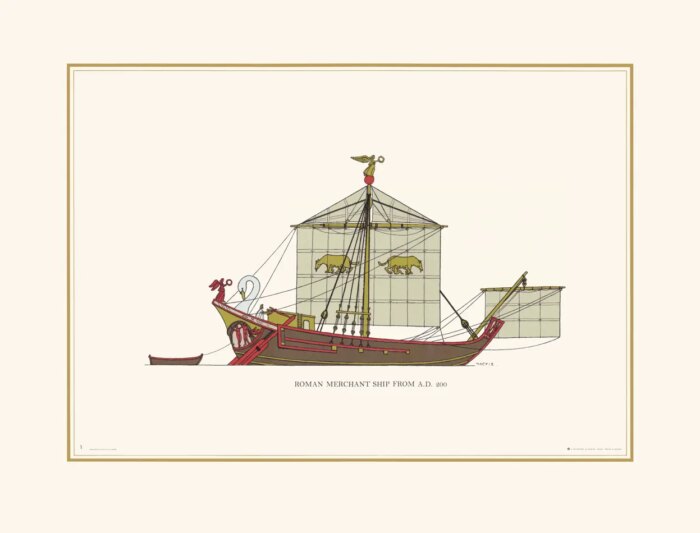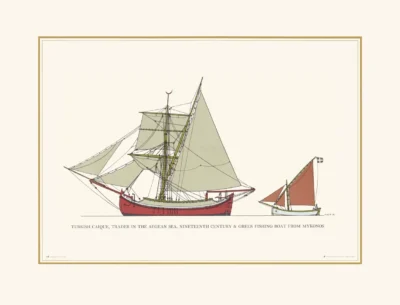Roman Merchant Ship from AD 200
£15.00
Roman Onararia: Mediterranean cargo vessel (scroll down for a more detailed Description)
Published 1963 by Hugh Evelyn; drawn by Swedish marine artist Gordon Macfie (1910-1971) for Tre Tryckare of Gothenburg (who retain copyright)
Print size: c 44 cm x 33.5 cm [17½″ x 13″] (may vary slightly from printers’ cut 50 years ago)
Printed on light orange (RGB c. fdf1dd) cardstock c. 300 g/sm2
Print is LARGE size – shipping is the same for 1 to 10 prints (based on largest print size in your order) – see Shipping & Returns
In stock
- Satisfaction Guaranteed
- No Hassle Refunds (see Shipping and returns)
- Secure Payments
Description
The Oneraria was the standard merchant vessel of the Romans The concept of boarding food of all kinds, liquid and solid in identical terracotta jars, standardised to the extreme, is indeed a very old practice, born of the practice of the Phoenicians, taken over by the Greeks, then the Romans. Certainly an amphora is more modest than a modern container, but still well suited to storage in the frail merchant ships of the time. The Oneraria was the standard “cargo” Roman, it is even in some respects a generic term that intersects sub-variants, like Corbita, cargo of heavy wheat. These heavy-tonnage ships, capable of carrying more than 3000 amphorae, originated from the Greek cataphract cargo vessels which ensured trade between the Hellenistic empires in the Mediterranean basin. They were distinguished by Roman characteristics, such as the abandonment of the ladder at the rear and a strong draft, revealing modern deep-sea ports with jetties, a quarter-deck Terrace often accompanied by an awning, a bridge superstructure, a figure of goose-neck stern.
Additional information
| Weight | 0.03 kg |
|---|---|
| Dimensions | 44 × 33.5 cm |




